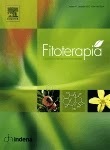Propolis is complementary and enhances the effects of medication, from ayurveda to homeopathy, and naturopathy to chemotherapy. This study reinforces concurrent research that propolis is a very promising biological agent with serious medical applications...
Addition of
Propolis to Irinotecan Therapy Prolongs Survival in Ehrlich Ascites
Tumor-Bearing Mice
Cancer Biother Radiopharm, 2014 Jan 2
We
investigated possible synergistic action of anticancer drug Irinotecan (IRI)
combined with ethanolic (EEP) and water-soluble (WSDP) derivate of propolis on
Swiss albino mice injected with Ehrlich ascites tumor (EAT). For survival
analysis mice were administered WSDP and EEP (100 mg/kg) daily for 3
consecutive days, beginning on 3rd day after EAT cell (1×106) injection. IRI
was administered at a dose of 50 mg/kg on days 1, 13, and 19. We simultaneously
studied peripheral white blood cell count, cell types washed from the
peritoneal cavity, functional activity of macrophages from peritoneal cavity,
and the level of primary DNA damage in leukocytes, kidney, and liver cells
using the alkaline comet assay. Three out of 9 mice per group survived the
entire duration of the experiment (90 days) in groups treated with IRI combined
with WSDP and EEP.
All test
components increased survival of mice by 7.53% to 231.54%. Combined treatment
with IRI and/or WSDP and EEP significantly decreased percentage of tumor cells
in the peritoneal cavity as compared to nontreated EAT-injected mice. All
treated animals had significantly higher percentage of neutrophils in the
peritoneal cavity in comparison to nontreated EAT-injected mice. We observed
significantly higher value of DNA damage in leukocytes of mice treated with IRI
and combination of IRI and/or WSDP and EEP as compared to nontreated
EAT-injected mice, while the same treatment decreased DNA damage in kidney.
Our results
showed that addition of propolis to IRI treatment enhanced antitumor activity
of IRI and prolongs survival in EAT-bearing mice, which definitely deserve
further studies to clarify the possible mechanisms of antitumor actions of
combined herb-drug treatments.









